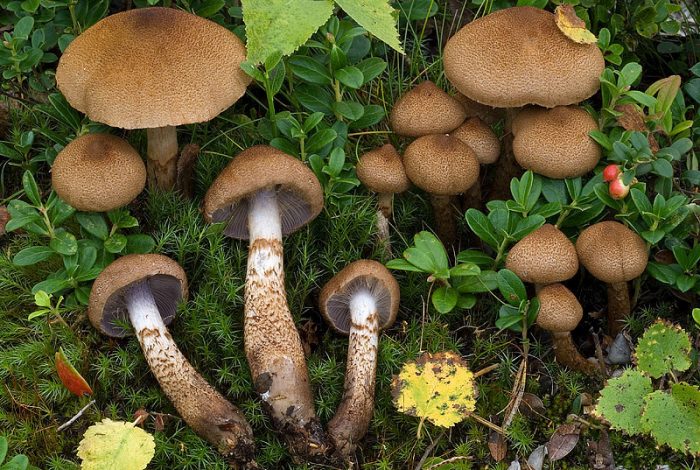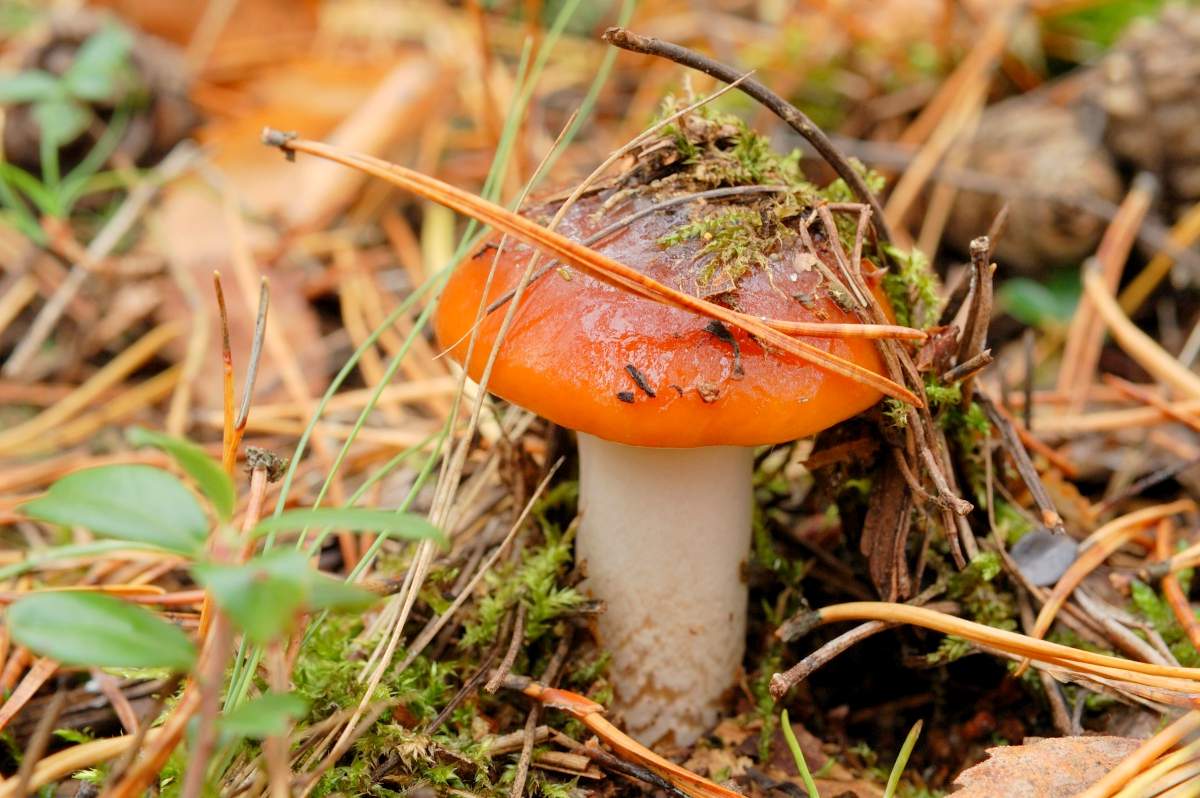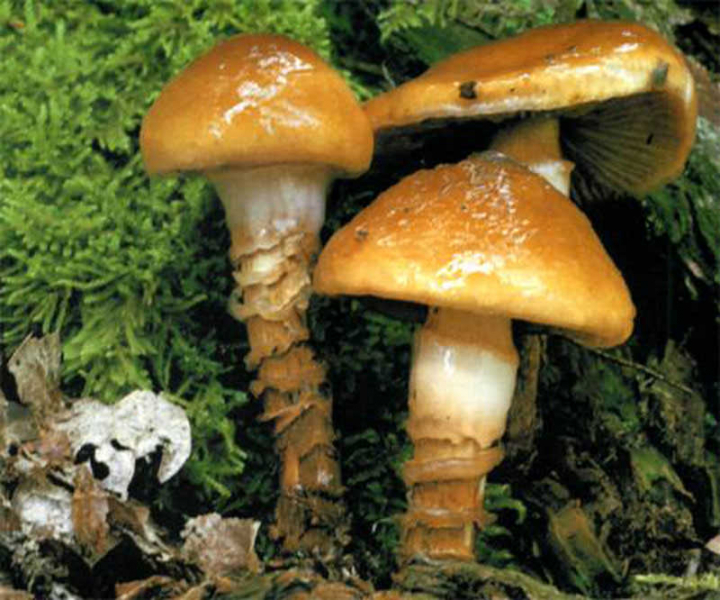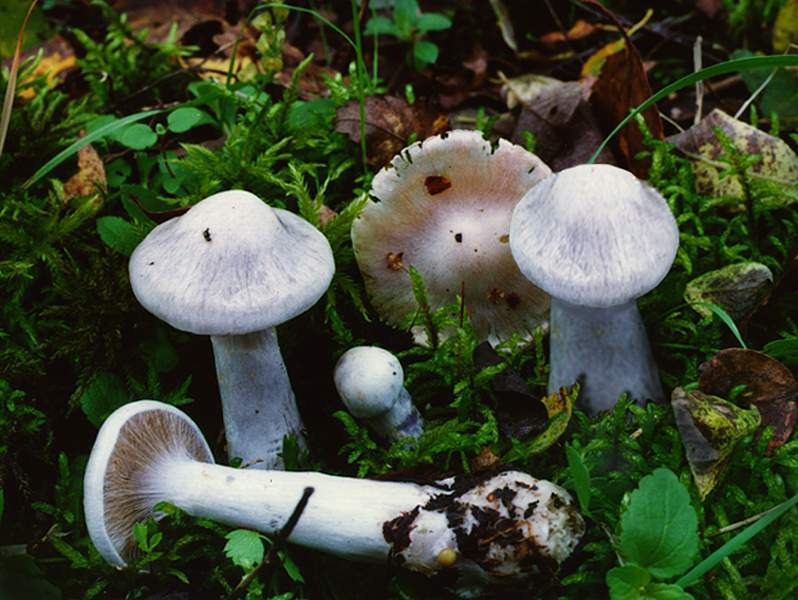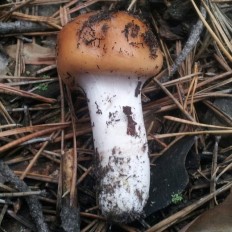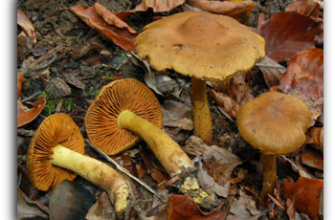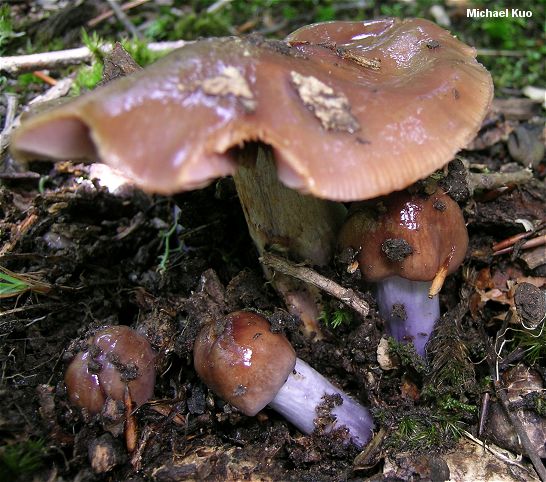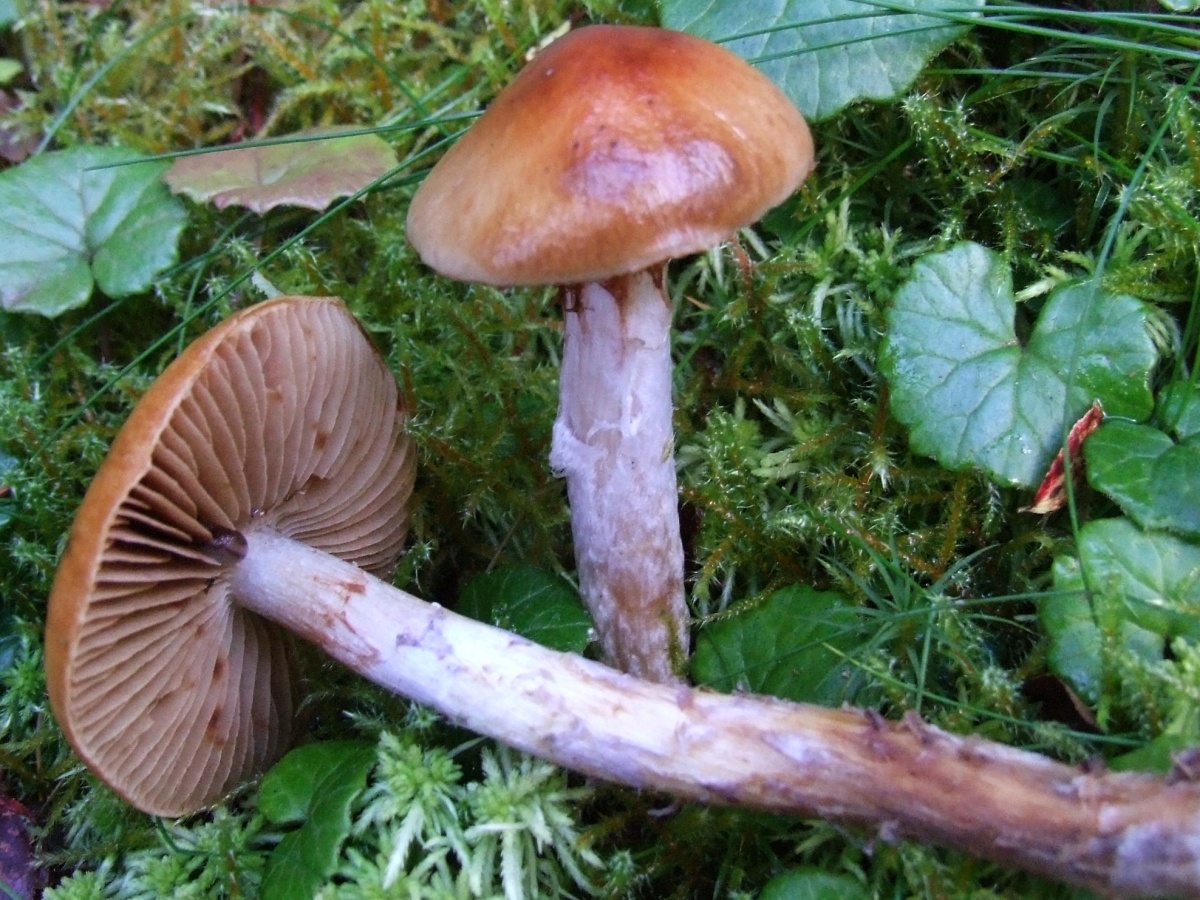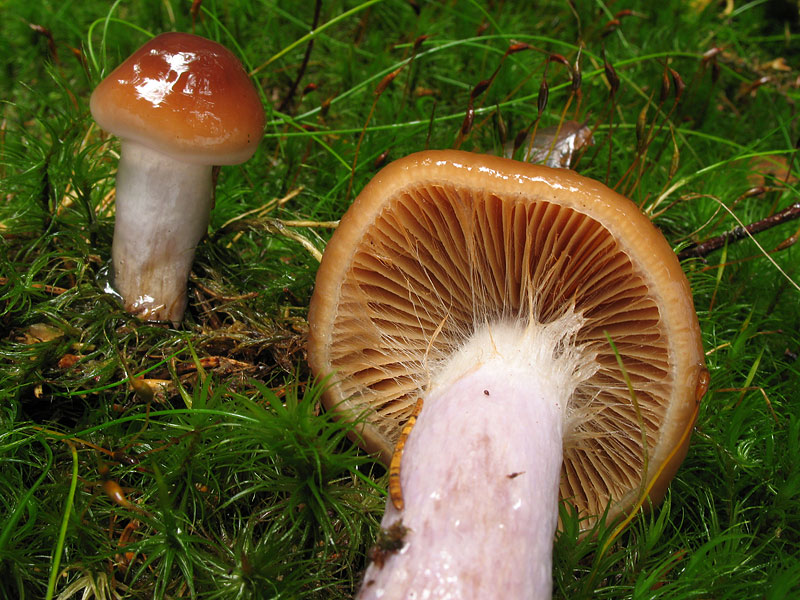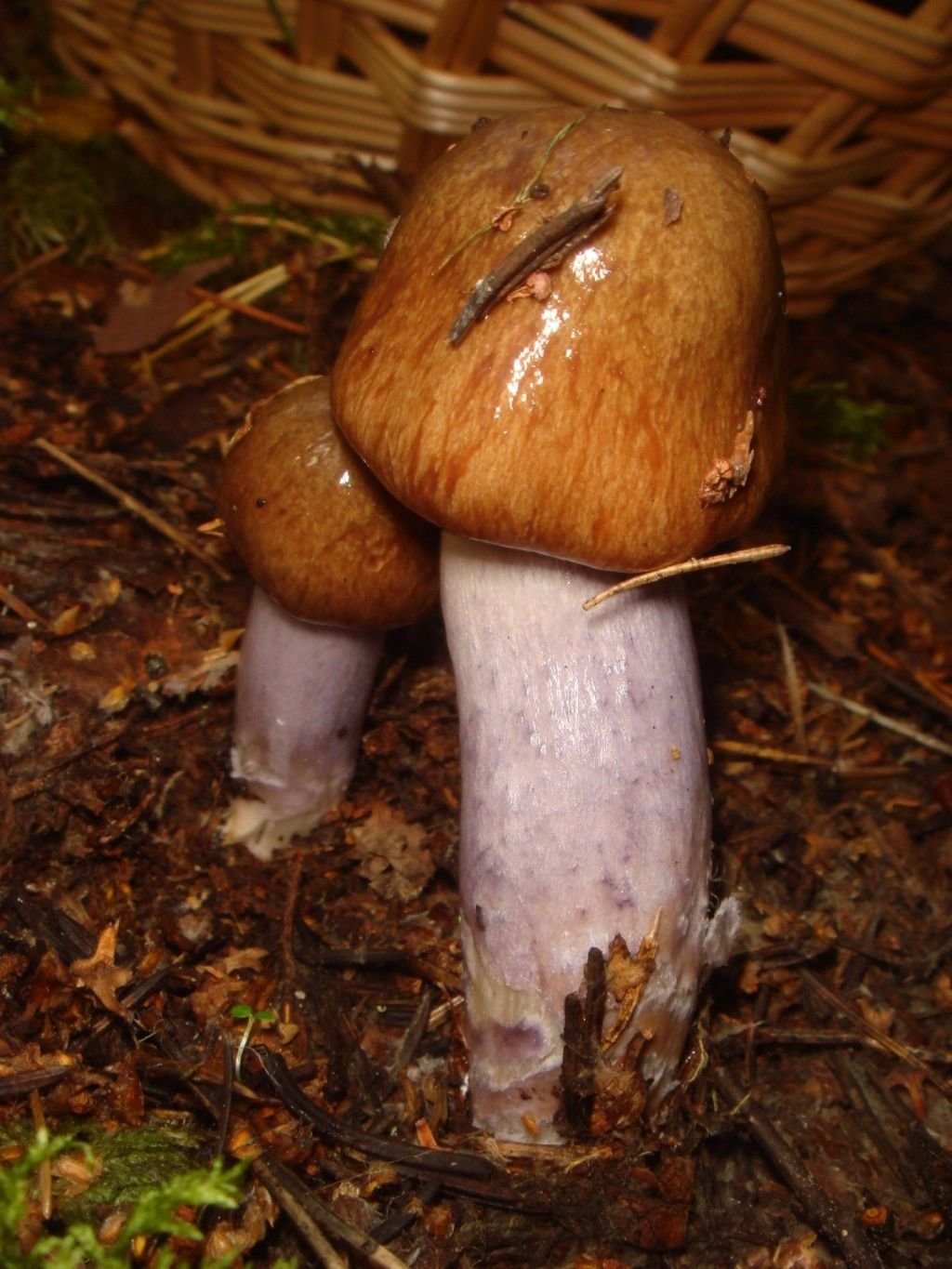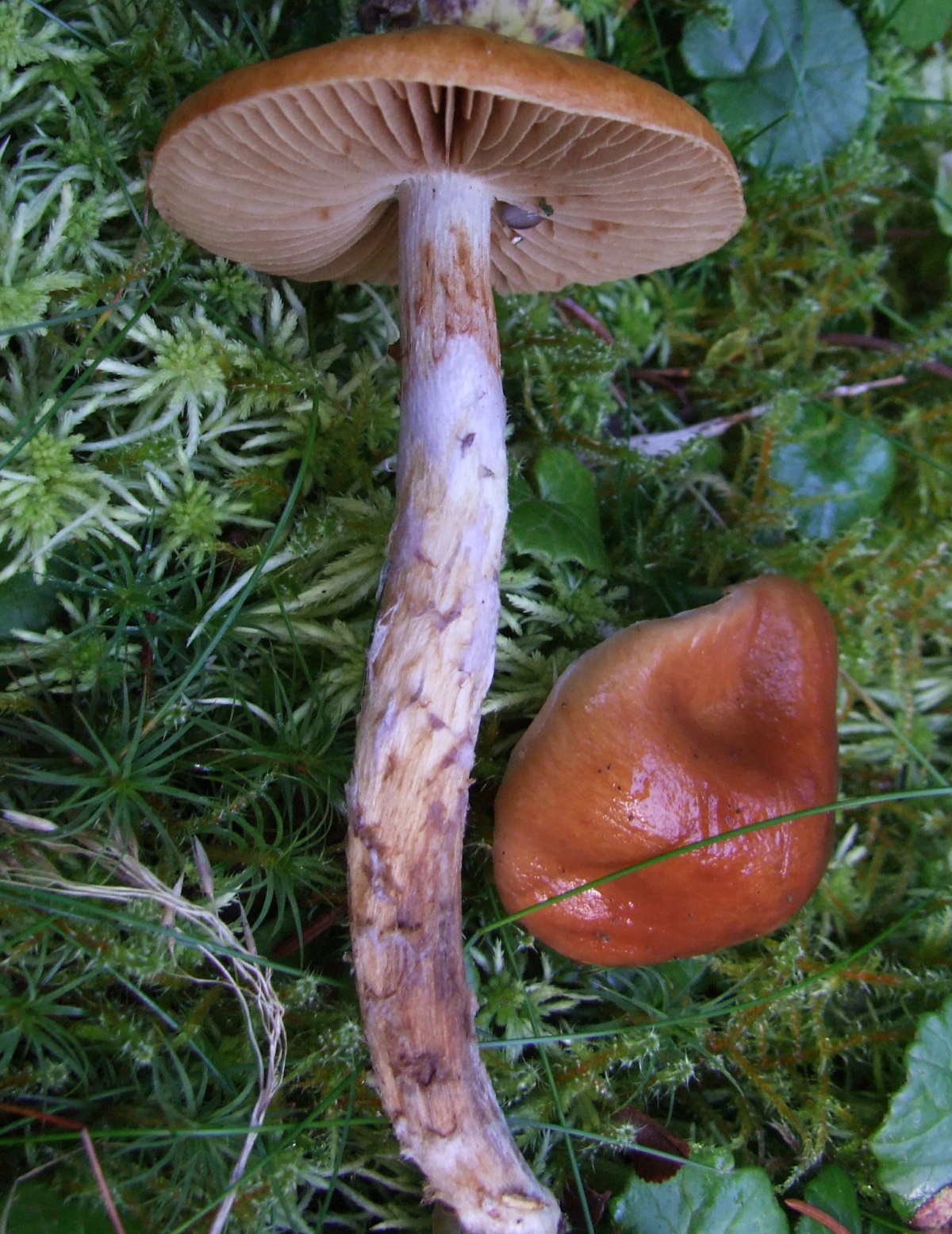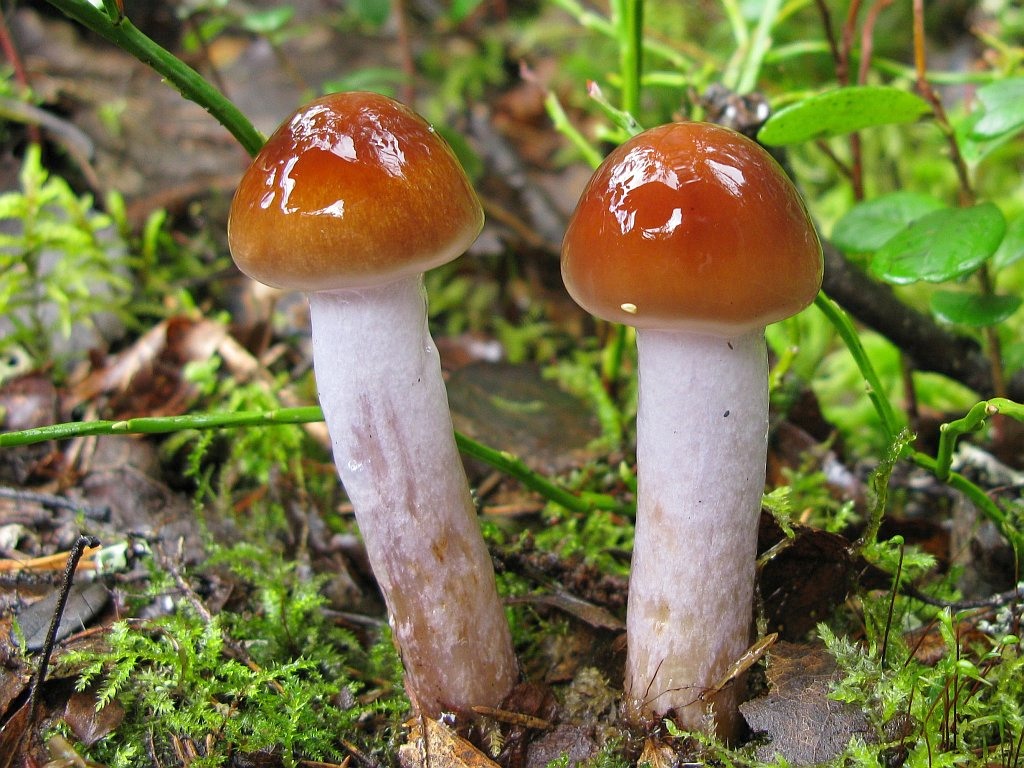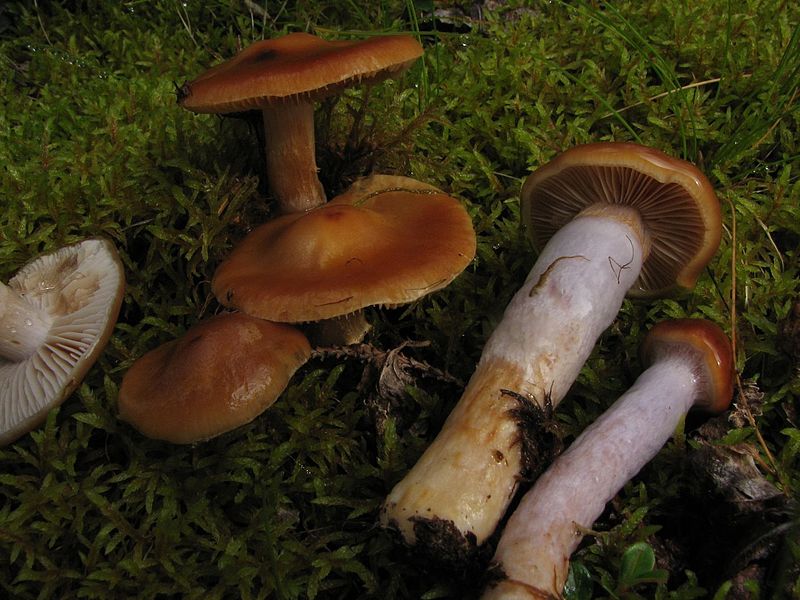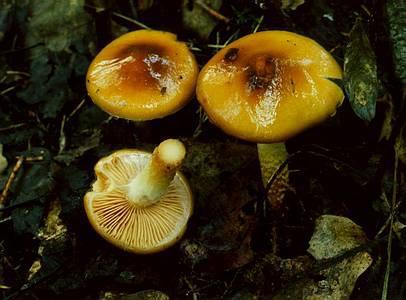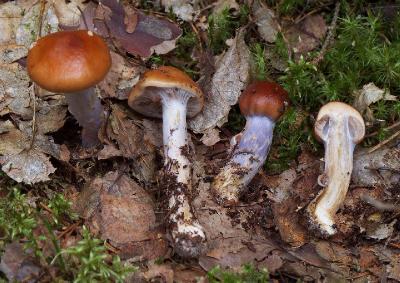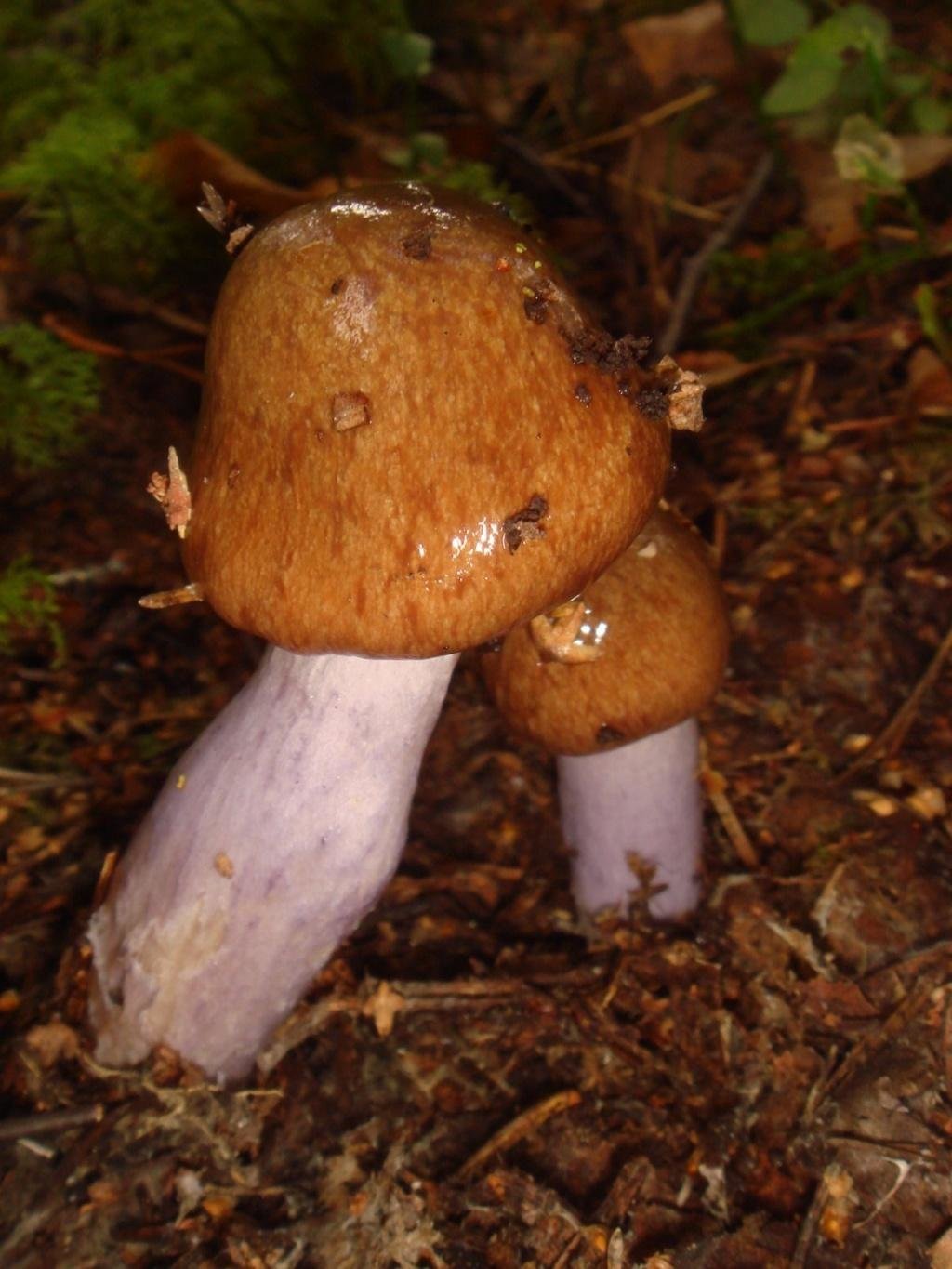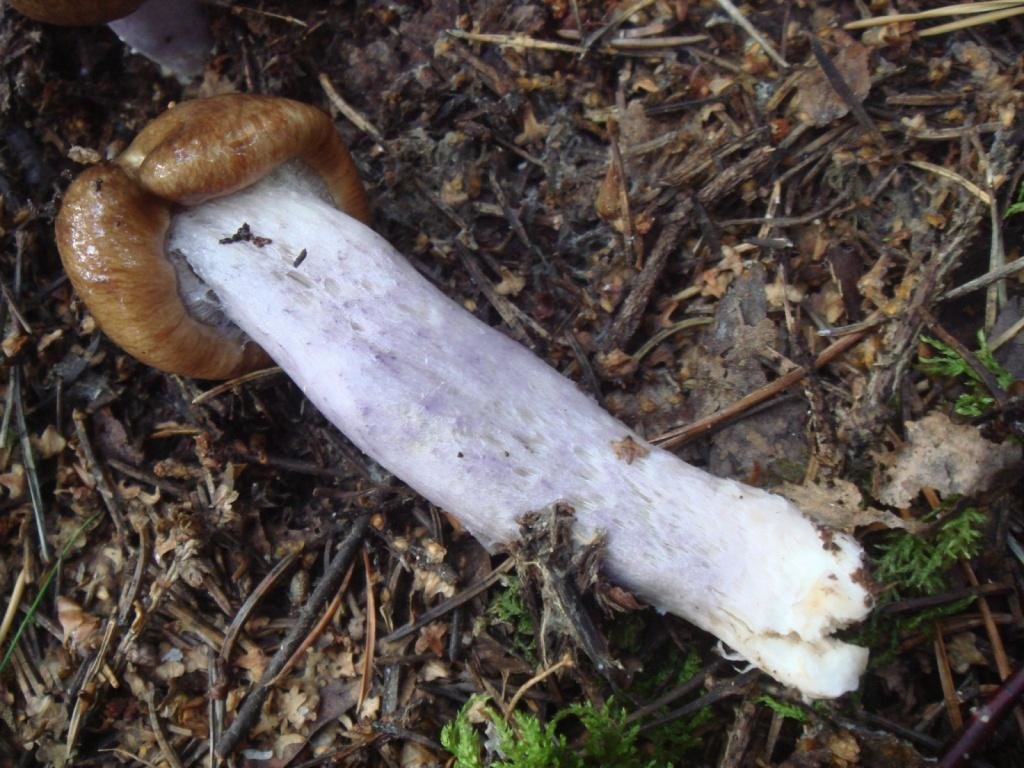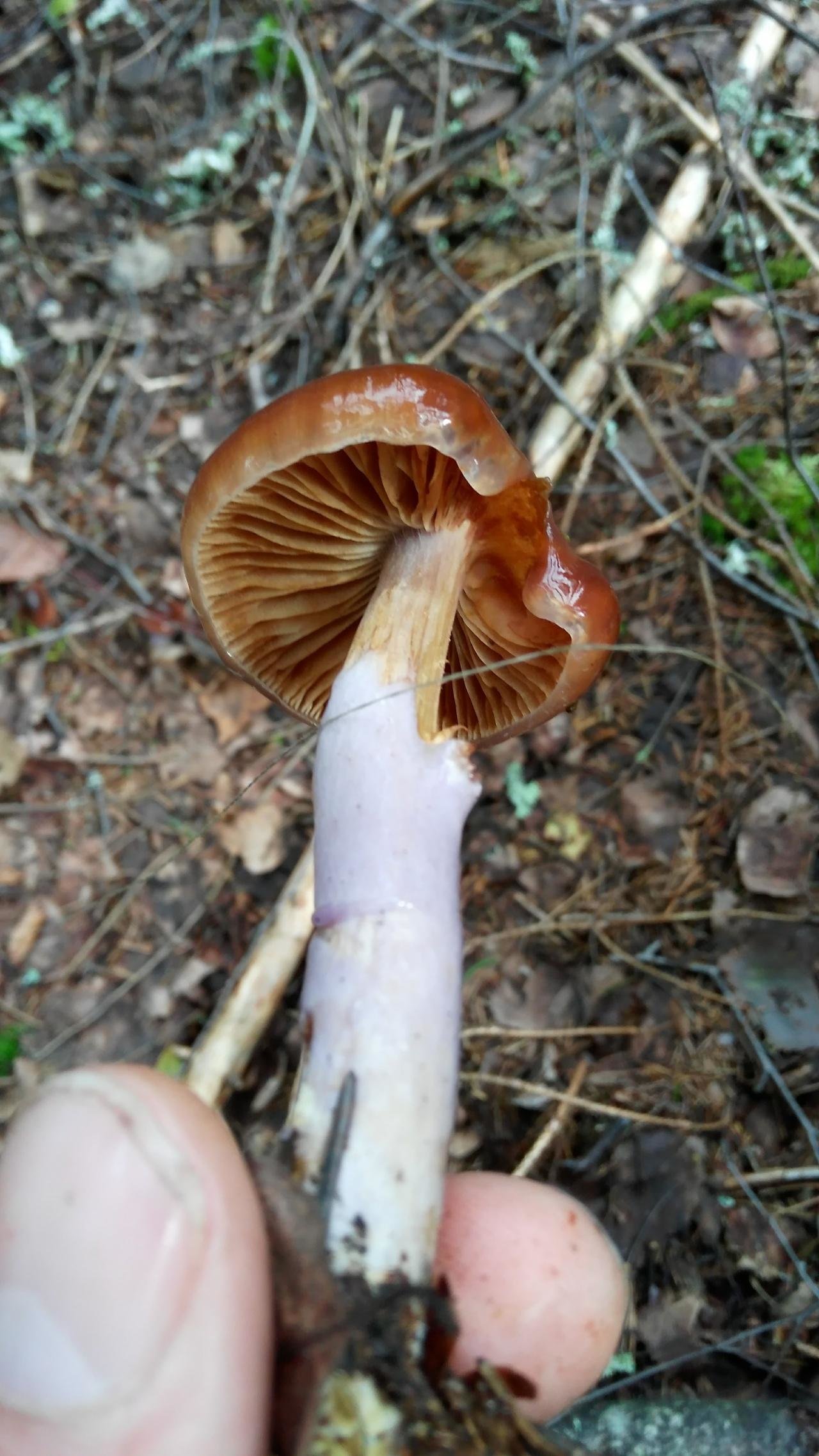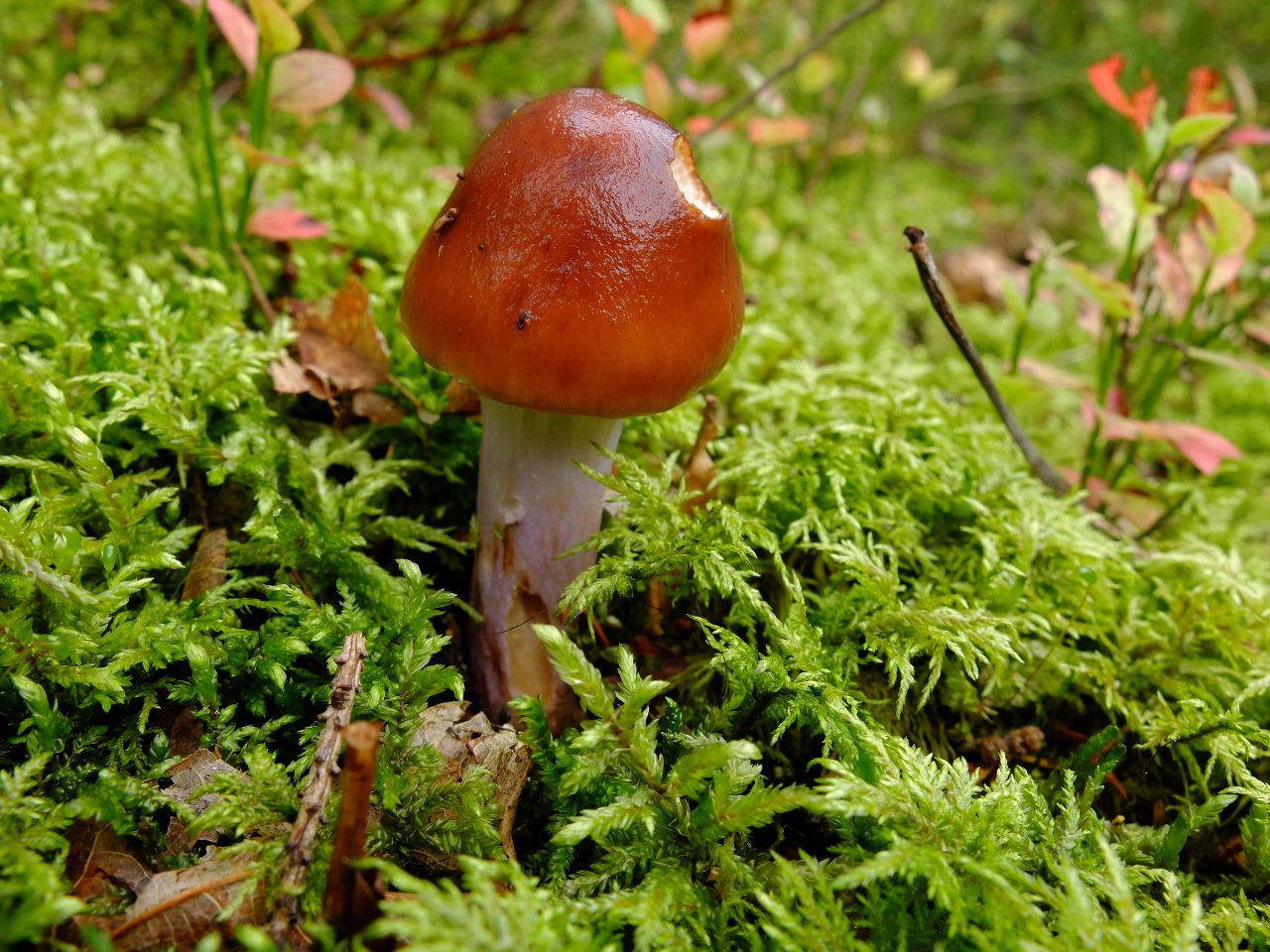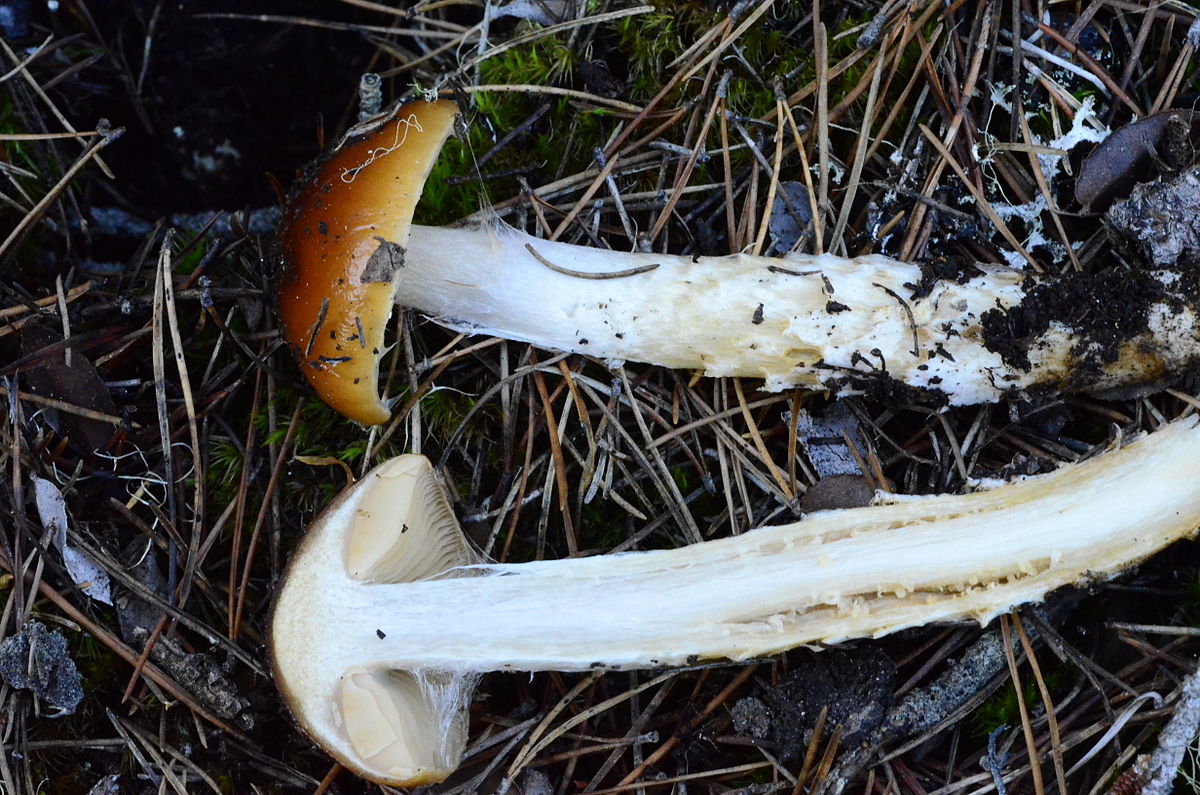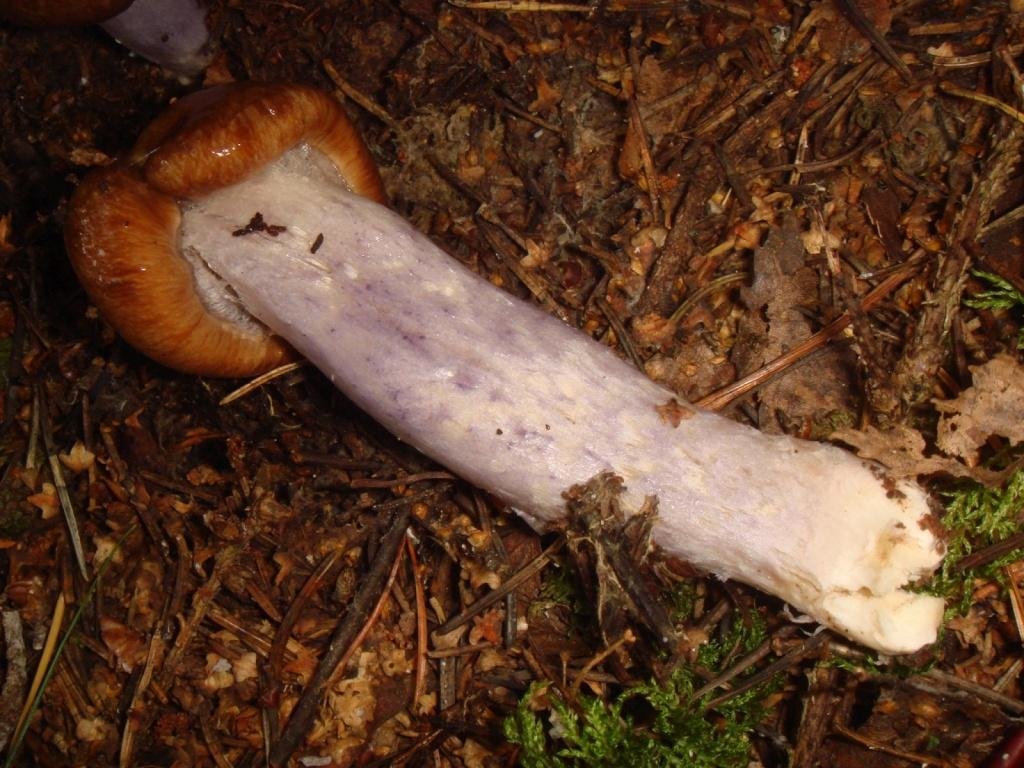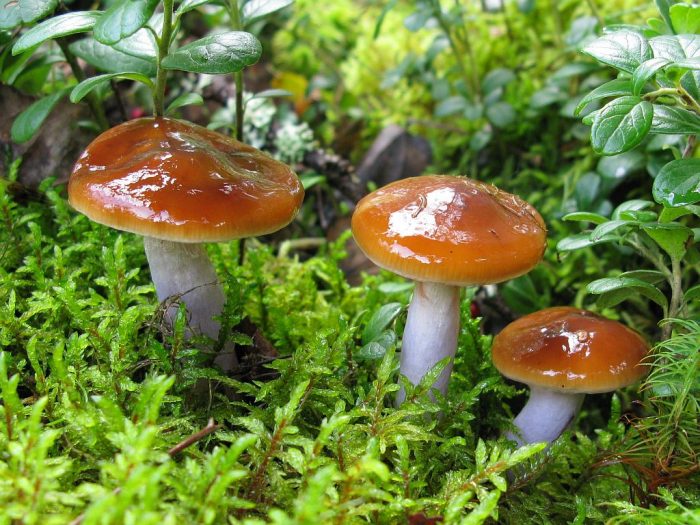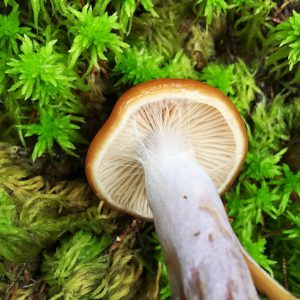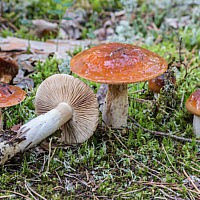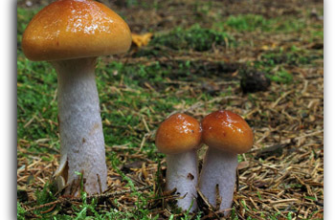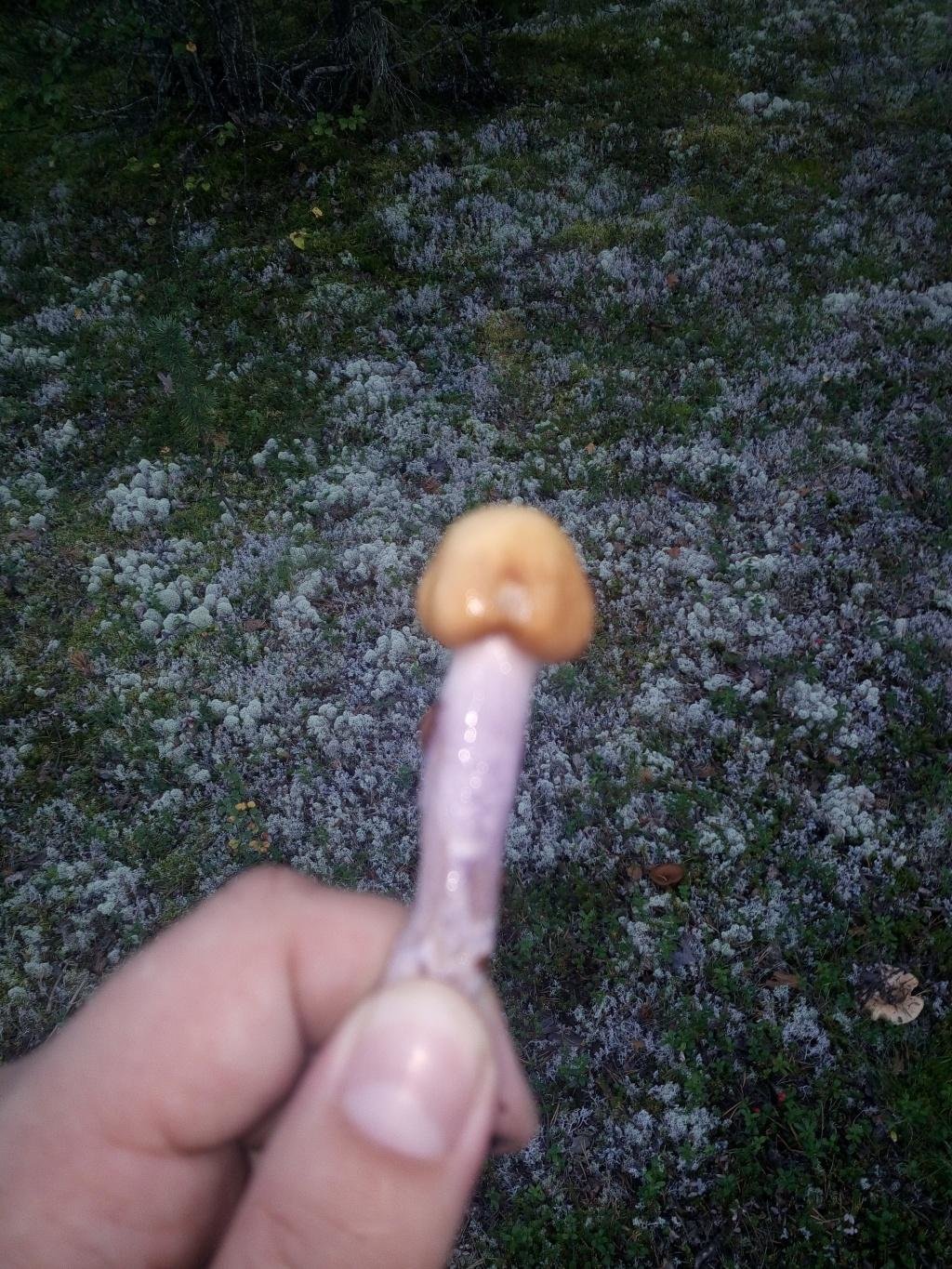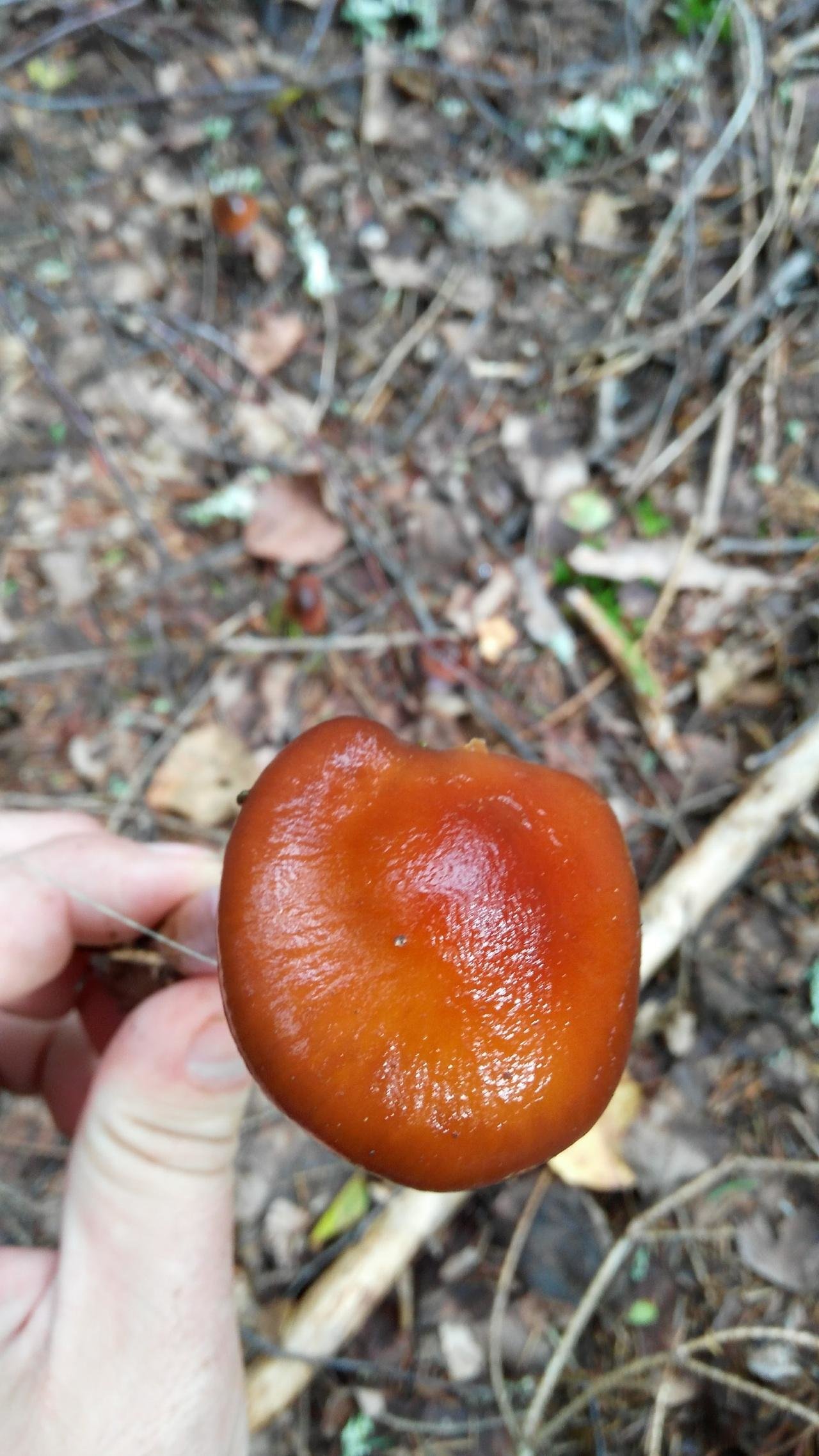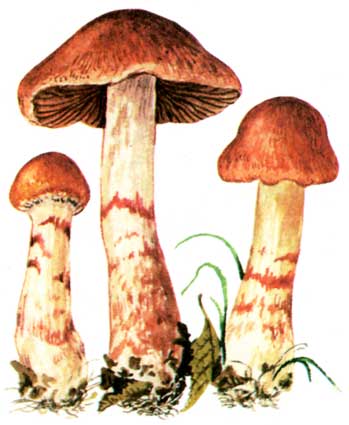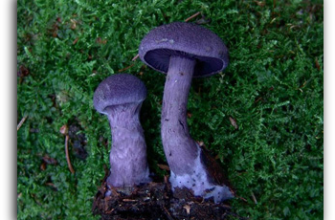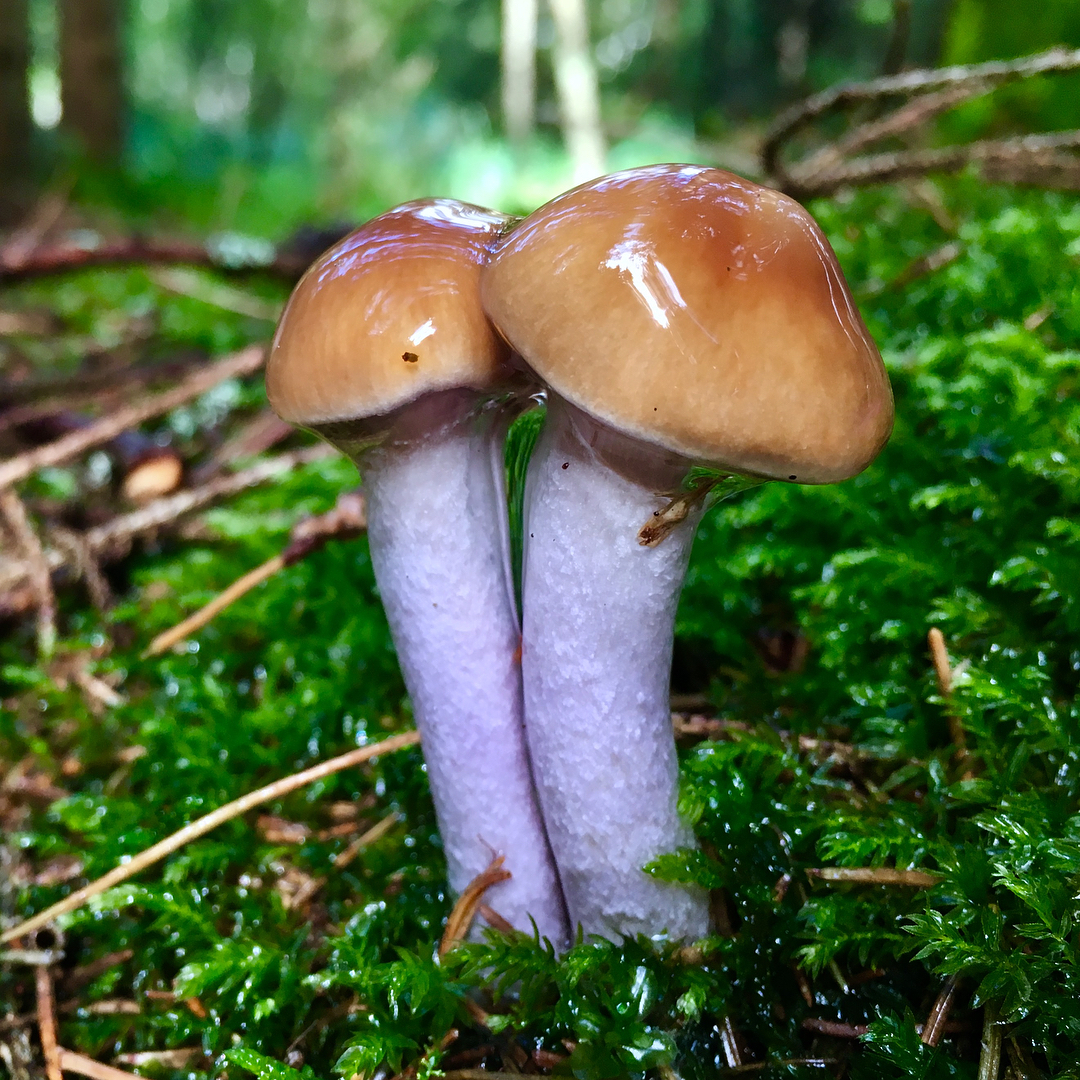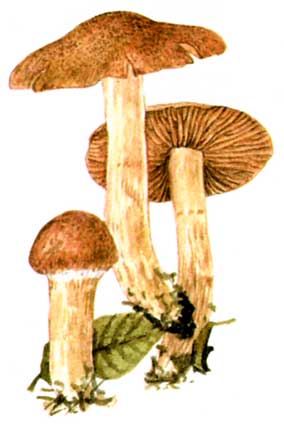Spider web brilliant: photo and description
| Name: | The webcap is brilliant |
| Latin name: | Cortinarius evernius |
| Type of: | Inedible |
| Specifications: |
|
| Systematics: |
|
The brilliant webcap (Cortinarius evernius) belongs to the Cobweb family and is extremely rare in Russia. During wet weather, its cap becomes shiny and becomes covered with transparent mucus, acquiring a glossy sheen, which is why it got its name.
What a brilliant spider web looks like
In accordance with its generic name, the mushroom has the remains of a velum with a spider-like structure. The flesh is tasteless, reddish in color with a slight unpleasant odor.
The spore body of the spider web is of a brilliant brown hue, consists of rare plates adhered to the leg. The spore powder has a rusty brown color. The spores themselves are medium-sized, smooth-walled, oval in shape.
In a young mushroom, the shape is at first sharp-bellied, dark brown in color with a lilac tint
Description of the hat
The cap of the mushroom is round in shape, its diameter is about 3-4 cm. With age, it opens, the fields increase, a small tubercle remains in the center. The color ranges from dark brown with a lilac tint to rusty orange.
The plates on the inner side, adhered with a tooth, are wide, have a medium frequency. The color is grayish-brown, later they acquire a chestnut color with a purple tint. The cobweb blanket remains white throughout the growth.
The flesh of the cap is also thin, but dense, has a brown color with a lilac tint
Leg description
The stem of the mushroom is in the shape of a cylinder, tapering towards the base. It is 5-10 cm long and about 0.5-1 cm in diameter. The color varies from gray to purple-coffee. White rings are noticeable along the entire length, which disappear with increased humidity.
Inside the leg is hollow, smooth and fibrous-silky
Where and how it grows
The most common cobweb is brilliant in the north of the European part of Russia and in the middle zone, it is also found in the Caucasus. The season starts at the end of summer - from the second half of August. Grows in mixed and coniferous forests.
Most often found in mossy places with high humidity: ravines, lowlands or near swamps. Glittering cobwebs grow in small groups of 2-4 mushrooms at the foot of pines and firs. Also found singly under bushes and among fallen leaves
Is the mushroom edible or not
The brilliant webcap belongs to inedible mushrooms. It does not contain any toxic substances and is not hazardous to health, but the unpleasant smell and taste of the pulp make it unsuitable for human consumption.
Doubles and their differences
The brilliant webcap can be easily confused with several more representatives of this species.
Slime cobweb (Cortinarius mucifluus) - is a conditionally edible species. The diameter of the cap is from 10 to 12 cm. The shape is bell-shaped at first, then straightens and becomes flat with uneven jagged edges. The leg is fusiform, 15-20 cm long, with a white color. The pulp is creamy, tasteless and odorless.
It differs from the brilliant cobweb in the absence of an unpleasant odor and mucus on the cap, even in dry weather
The most beautiful or reddish webcap (Cortinarius rubellus) is a poisonous mushroom that belongs to inedible. The length of the leg is 5-12 cm and from 0.5 to 1.5 cm in thickness, it expands downward. It has a brown-orange fibrous surface with light rings along its entire length. The diameter of the cap varies from 4 to 8 cm. The initial shape is conical.Further, it levels out, leaving a small convex mound at the top. The surface is smooth and dry with irregular edges of a brownish-red or brownish-purple color. The pulp is yellow-orange in color, odorless and tasteless.
It differs from the spiderweb of a brilliant rusty-reddish color and a lighter shade of the cap
Conclusion
The brilliant webcap is strictly not recommended to be cut and eaten. Having found it in the forest, you should be extremely careful: other edible spiderwebs can be confused with it. Most often it can be found in forests with a predominance of pines and birches.
Description of the dirty webcap
The diameter of the cap is 4-8 centimeters, but sometimes it reaches 10 centimeters. At first, in cobwebs, the shape of the cap is wide-bell-shaped with tucked edges, covered with a blanket on the lower side, but as it grows, it becomes convex, the edges drop, and a tubercle remains in the center. Even later, the cap becomes open, sometimes the edges become wavy. The surface of the cap is smooth, sticky, slimy, in dry weather it is shiny.
The color is variable: at first it is ocher-brownish or red-brown, while the middle is black-brown, over time it becomes yellow-brown, orange-brown, or yellow-ocher with a red-brown center. In dry weather, the plates are brown.
The plates are adherent with a tooth, they are located with an average frequency. The color of the plates is initially bluish or light ocher, but becomes rusty brown or clayey with age. The cobweb cover is distinct, slimy, dense, whitish or pale blue in color. The spore powder is brown. The flesh is dense, rather fleshy, creamy or whitish in color, and brownish at the base of the leg, without a special smell.

The length of the leg is 5-10 centimeters, the diameter ranges from 1 to 2 centimeters. The leg is straight, cylindrical, slightly narrowed towards the base, solid, covered with mucus. The upper part of the leg is whitish or lavender, below it is brownish with rusty-brown bands.
Places of growth of spiderwebs soiling
Spider webs dwell in deciduous and mixed with aspen forests, as well as in aspen forests. They choose humid places. They grow in small groups or singly, they are rare. Fruiting from July to late September.
Evaluation of the taste of the soiling spiderwebs
Staining webcap is a good edible mushroom. These mushrooms can be used fresh, after boiling for 15 minutes, they are suitable for preparing main courses, pickling and pickling.

Other mushrooms of this genus
The silver webcap is an inedible representative of the family. The diameter of its cap is 6-7 centimeters, its shape varies from strongly convex to flat. The color of the cap is purple, but it can fade and become almost white.
The height of the leg can reach 10 centimeters, it is very thin in the upper part, and expands downward. The color of the leg is gray or brown with a purple tint. Silvery cobwebs grow in coniferous and deciduous forests. These mushrooms are found everywhere. Produce abundantly from August to September, less often they can be found in October. Fruiting is stable, almost annually.
The peacock webcap is also an inedible mushroom. The shape of the cap varies from spherical to flat, there is a tubercle in the center, edges with cracks. The entire surface of the cap is dotted with small brick-colored scales. The stem is thick and very strong, also covered with scales.

Peacock cobwebs grow in many European countries: in France, Denmark, Germany, Great Britain, they are also found in the Urals and Siberia. These mushrooms favor hilly and mountainous landscapes. The favorite tree is beech. Fruiting time falls in August-September, less often they are met in October. This inedible mushroom contains toxins that are hazardous to health.

